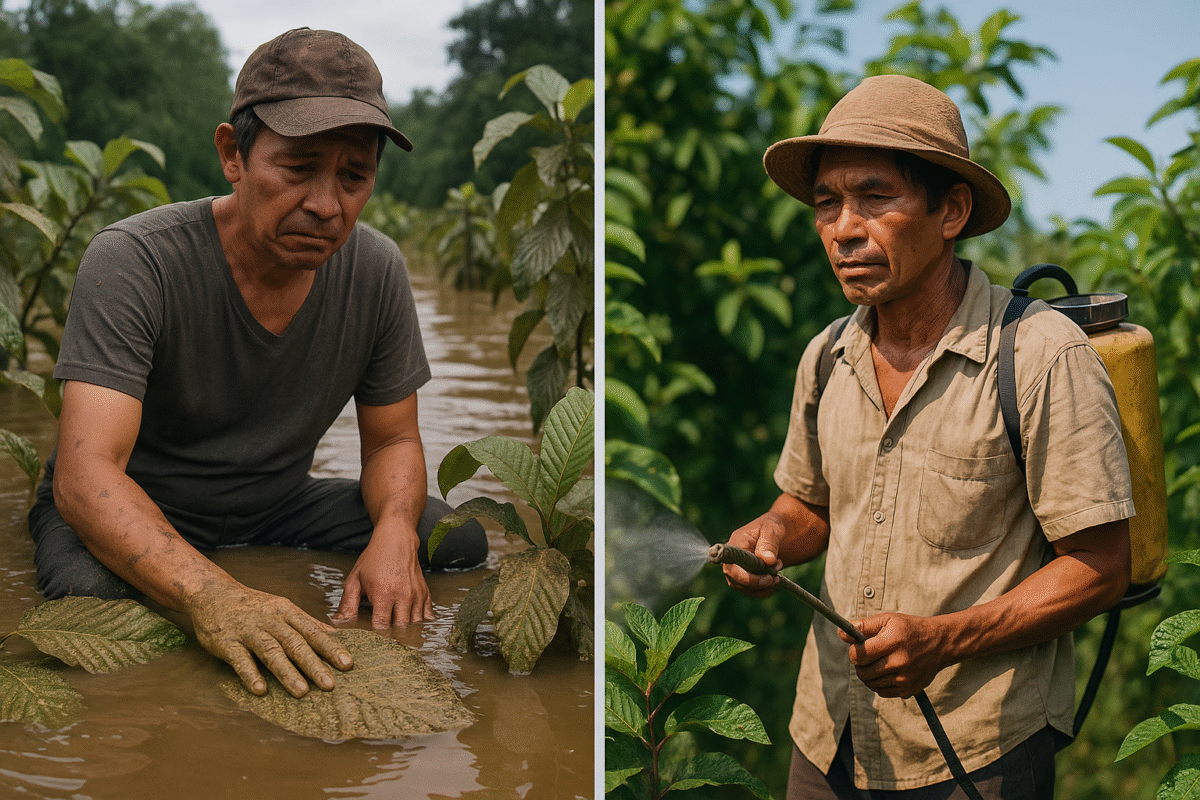Floods and pest attacks can compromise kratom safety and potency. Learn why NusaBotanicals avoids these risks through selective, small-batch sourcing.

Kratom is a botanical product that depends heavily on nature’s rhythm. While many buyers focus on strain names, colors, or pricing, one crucial factor often goes unnoticed: the condition of the harvest environment. Flooding and pest outbreaks can have a serious impact on the safety, potency, and overall quality of kratom leaves. Unfortunately, this is an area where many sellers either don’t know—or don’t care.
At NusaBotanicals, we believe in transparency. Here’s why it’s unwise to purchase kratom from flooded areas or pest-affected crops, and why we carefully avoid these risks in our supply chain.
The Hidden Risks of Flood-Harvested Kratom
When heavy floods hit regions like Kapuas Hulu, the water can rise so high that kratom trees become partially submerged. At first glance, harvesting from these trees may seem like business as usual—but the reality is much more concerning:
- Contamination from polluted water: River water often carries mud, waste, heavy metals, and chemical residues from agriculture or illegal mining. Once the leaves are submerged, contaminants cling to the surface and are very difficult to clean fully.
- Inferior leaf quality: Farmers harvesting during floods often use small boats (sampan) to collect only the topmost leaves. These are typically younger leaves, which naturally contain lower alkaloid levels and reduced potency.
- Mud-coated weight: Muddy leaves not only suggest contamination but also weigh more, meaning buyers get less actual kratom per gram while paying the same price.
It’s a dangerous misconception to believe that simply drying these leaves makes them safe. Floodwater contamination is a risk that can compromise both quality and consumer trust.
Why Pest-Affected Kratom Can Be Risky
When pests attack kratom trees, farmers face potential crop loss. To protect yields, many resort to spraying pesticides. This introduces a different set of concerns:
- Residual chemicals: Pesticide residues on leaves can persist even after sun and rain exposure. While natural weathering helps, it is not a guaranteed cleaning method.
- Health and safety risks: Consuming kratom with pesticide contamination is not only a quality issue but also a health concern, especially for frequent users.
Some sellers downplay this issue, but at NusaBotanicals, we see it as a critical red flag.
Our Commitment: Selectivity, Quality, and Trust
At NusaBotanicals, we’ve built our reputation on small-batch sourcing with big attention to detail. We work directly with farmers and closely monitor local weather and crop conditions. Here’s how we handle it differently:
- Avoiding flood harvests: We never purchase leaves harvested during or immediately after floods, regardless of how attractive the price may be.
- Skipping pest-sprayed crops: When pest outbreaks happen, we wait. We don’t take shortcuts or risks with pesticide exposure.
- Selective timing: We only buy when conditions are optimal—ideally after heavy rains that rinse leaves clean, but before flooding or pest damage occurs.
- Transparency and traceability: Every batch we offer goes through careful inspection, ensuring global-standard quality backed by deep local knowledge.
Our motto: “Local Knowledge, Global Quality”—is not just a slogan. It’s how we protect our customers and uphold the standards that set us apart.
The Takeaway
When it comes to kratom, what happens before the leaves are picked matters just as much as what happens after. Floodwaters and pesticides are invisible threats that can affect both safety and potency. By choosing NusaBotanicals, you’re choosing a partner that values integrity, sustainability, and uncompromised quality.
Because for us, it’s not just about selling kratom—it’s about earning your trust, one carefully chosen batch at a time.
Reach out to us for more question! We are happy to have you! 🙂 or,
Browse through our selections of products!

